It was a chilly Sunday morning and I was relaxing on my couch scrolling through emails. At about 8:30 AM, just before my morning coffee, I saw an article in the Herald about how city hall was going to recommend the closing of my local fire hall.
It’s just across the street from my apartment and was recently finished being built in 2010. It was new, part of a mixed-use development (with affordable and market housing above it, in addition to offices), and was responsible for fire emergencies in the downtown core and water rescue along the Bow River. The recommendation was called a “disaster in the making,” by the Calgary Firefighters Association and with good reason.
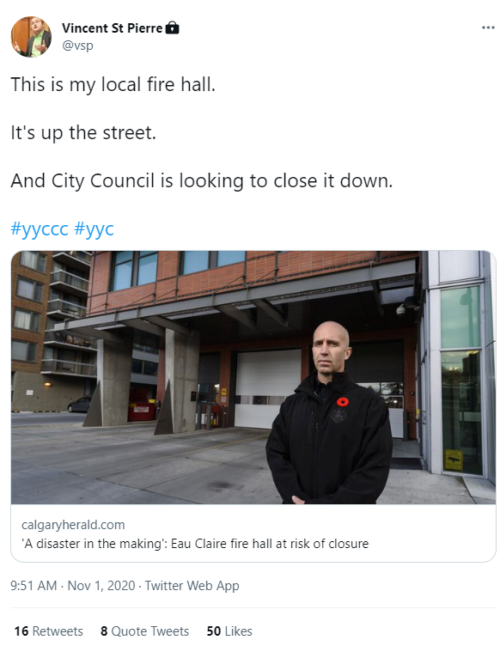
This effort had to be stopped. To be frank, I was also grumpy that Sunday morning. The night prior I was volunteering at a casino until 2 AM: so mix in unemployment, free time, and the pre-coffee phase of a Sunday morning, it was a dangerous cocktail of grumpiness and the intent to do something about said grumpiness.
So I did what I do best.
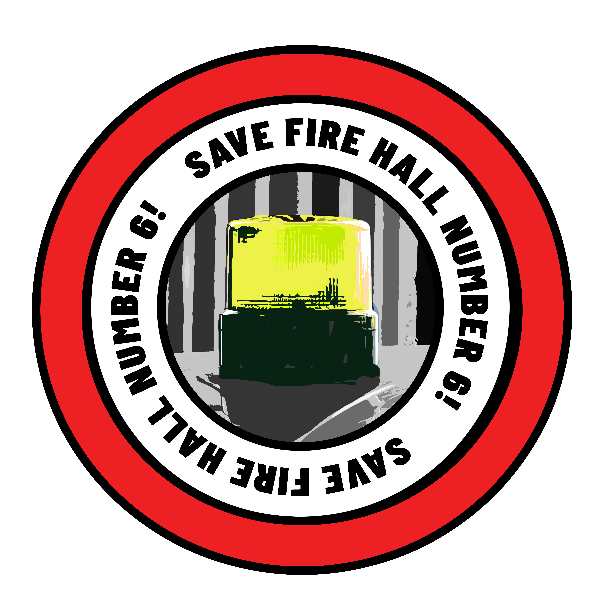
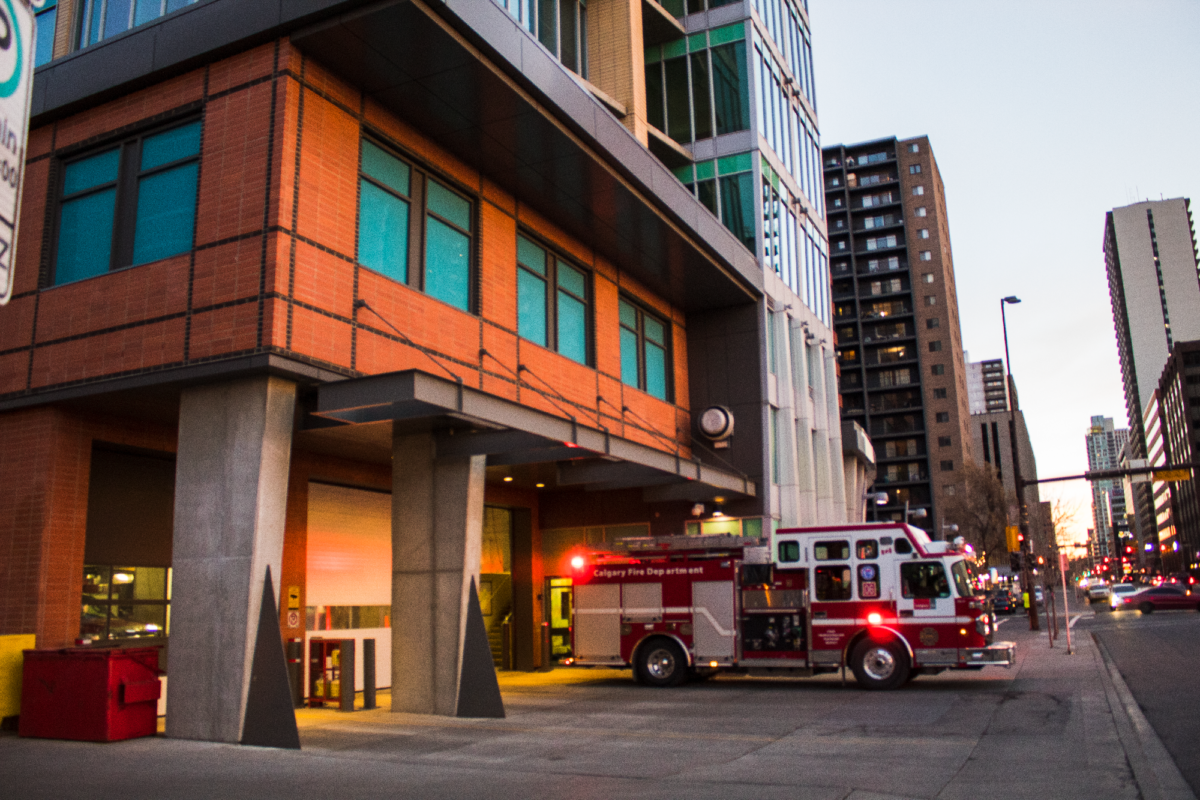
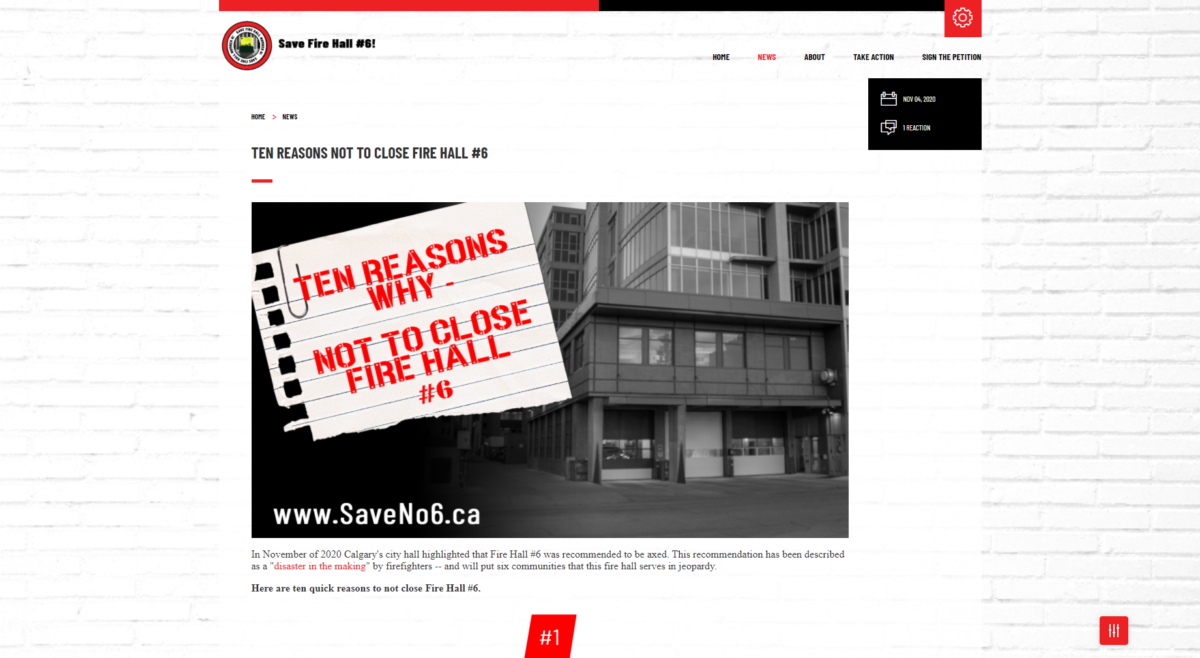
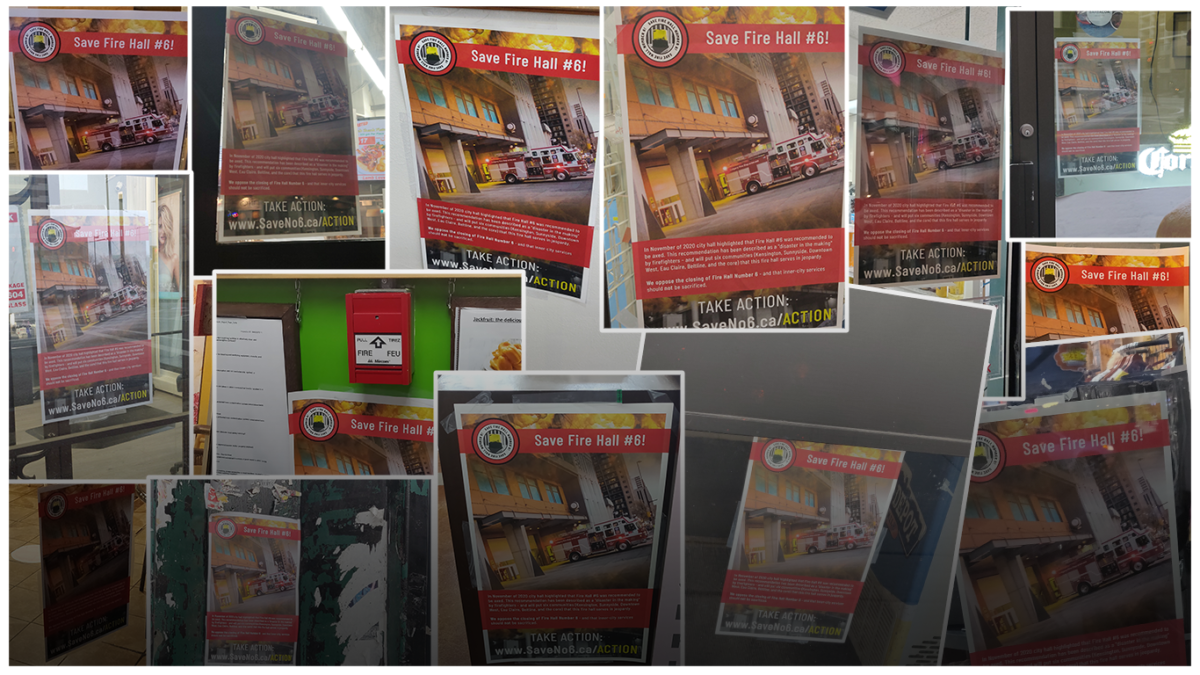
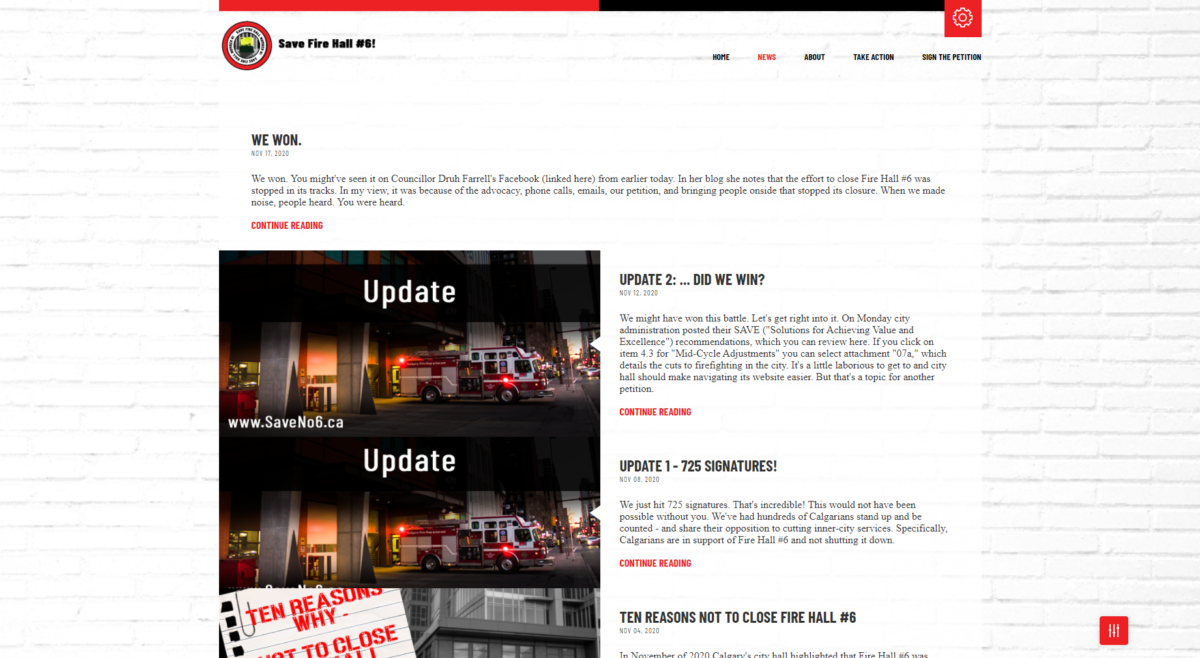
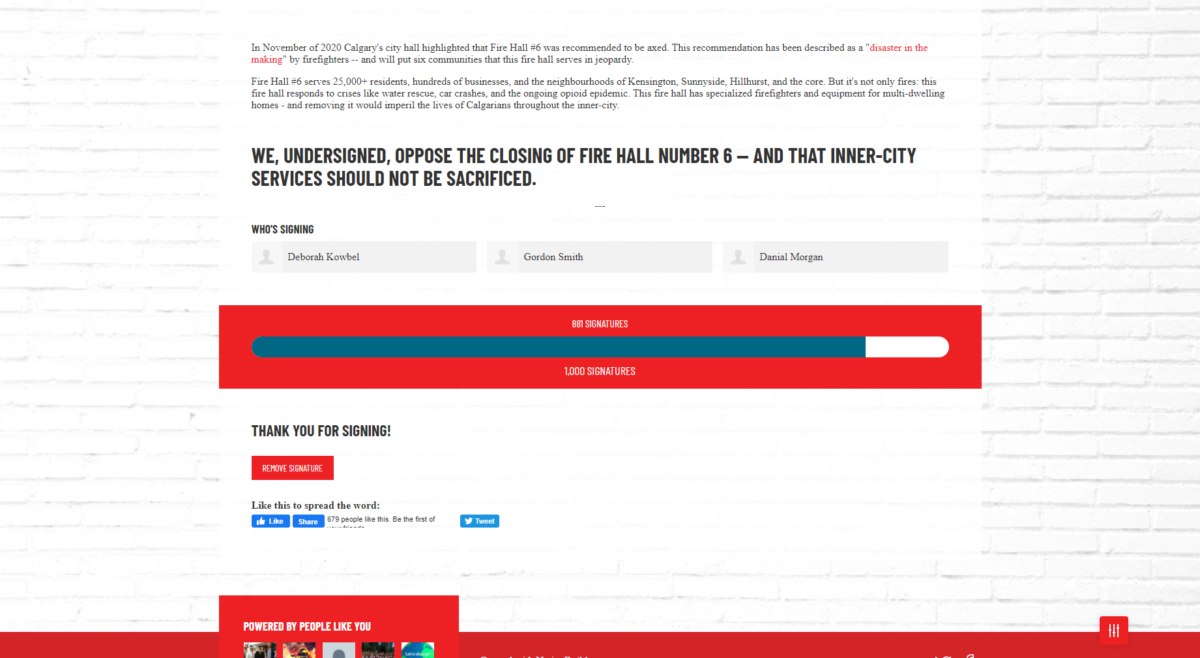
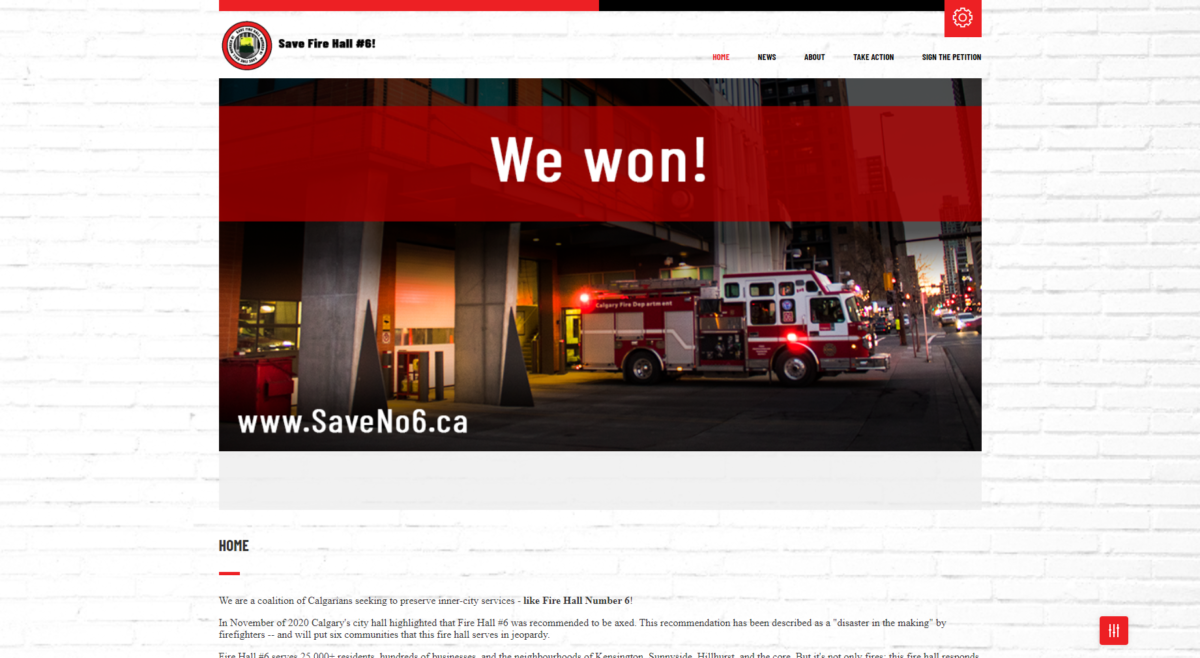
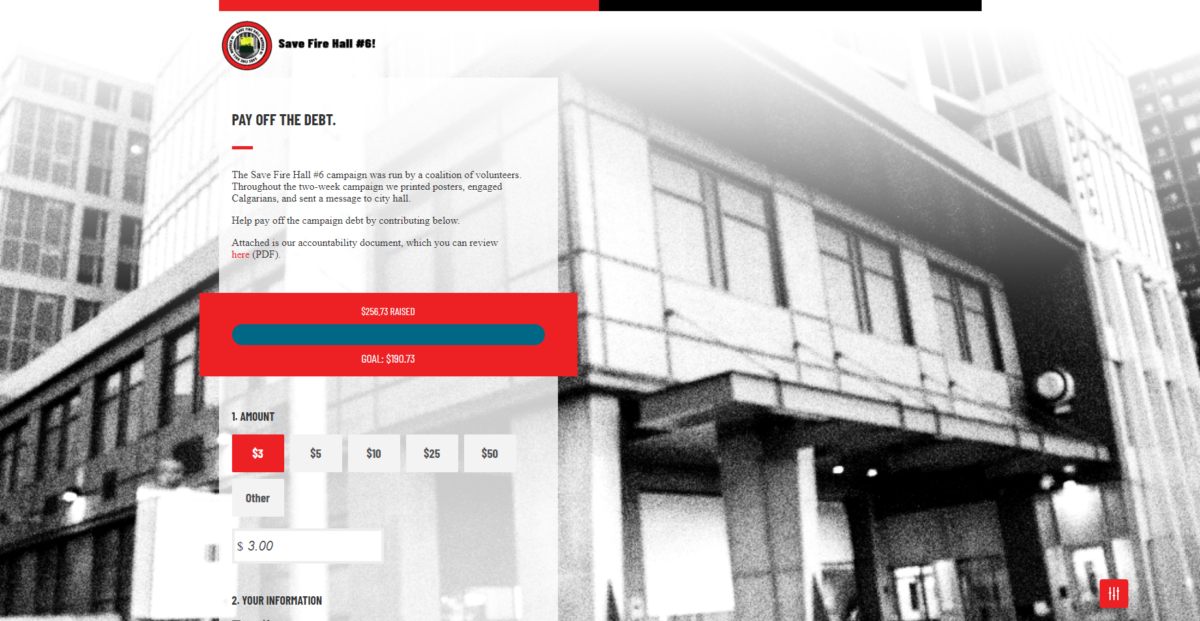
I made a website with a petition and began the work of designing a logo. I used a software called Nationbuilder – which is often relied upon by non-profits, union organizations, political campaigns, subscriber-based media organizations, and activist groups to push a cause.
I myself used it for Dr. Judy Hehr’s election in 2013 (where she won with 67% of the vote), her husband’s run in 2017 (he also won), multiple campaigns in between and more recently for the Canadian Club of Calgary’s rebrand in 2020. I’ve also been pulled into teaching sessions to Ask Her YYC on the subject of Nationbuilder and campaigns owning their data while competing in elections (I’ve presented twice, here and here).
All in all, it took about two hours to set up, get going collecting signatures, and empowering people to stand up for our local fire hall.
The unique toolset provided by Nationbuilder allowed me to do three things:
- Rely on those who signed up for the petition to then work within their community to collect more signatures. This was done by individuals being prompted to share on social media after signing the petition and also by an email sent their way to encourage them to forward their personalized link around to their friends and family to build further momentum. With a reduced ability to knock on doors and lacking traditional advocacy methods due to Covid-19, it was essential to take our efforts online. The tool made it social.
- Create a singular spot where information could be shared and showcased. Citizens could follow along with who was signing the petition and feel that it was more than some random guy on Twitter (me) and his friends pushing the subject. People throughout Calgary, who were neighbours of the fire hall and those who simply cared about the cause of inner-city services, came together to make themselves heard. It also provided an email blast toolkit to follow up and encourage more action (calling your local city councillor or sharing blog posts). The tool gave the effort momentum.
- Finally, I used the software to create a simple fundraising page so that we could cover the costs that piled up from the effort. By using Stripe (a payment processor) and its integration with Nationbuilder, I was up and going collecting donations in under 30 minutes and able to pay the associated costs that were sitting on my credit card. So the toolkit allowed for the effort to not only happen but rely on its supporters to fund its existence.
That final point was important as there are real costs associated with campaigns of this nature. And we had costs – like our postering campaign where more than 100 posters were put up in the neighbourhood, either in businesses or condos/apartment lobbies:
All told, within the week city hall changed its recommendations.
This was due to public pressure and input by the community, according to the words of administration. From the Firefighters Association, local councillors (Cllr. Woolley and Cllr. Farrell), and the SaveNo6 campaign, the recommendation was pulled.
Well before this recommendation was pulled I had submitted a request to present at city hall for the 23rd. In fact, I was placed on the first panel to address the councillors and mayor. This was a unique honour as I’ve found the first speakers often help shape the scope and manner of a dialogue, especially in political discourses. So even though the cause was won it was still an opportunity to help the dialogue along by presenting on the budget deliberations of council.
In that presentation, I highlight the need to think long term, safeguarding inner-city public services like Fire Hall #6, and the ever-present focus of safeguarding services for the vulnerable.
As per usual, there were lessons learned and things that I’ll apply to the next project. And, of course, that I will apply to the next round of discussions on the fire hall – as it has been highlighted by multiple parties that it will be reviewed again in the fall of 2021.
So stay tuned – while this round has been won, the fight is not yet over on making sure that Fire Hall #6 isn’t on the chopping block again.